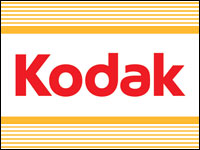
Apple ousted Research In Motion from its top spot in the U.S. smartphone market in the third quarter, according to a report Canalys released on Monday, which showed no letup in iPhone shipments.
In terms of smartphone operating systems, Google’s Android OS held a commanding lead, with a 44 percent share of the U.S. market.
Apple’s Strong Performance
Although RIM launched its new BlackBerry Torch smartphone during Q3, the product shipped only during the second half of the quarter. Meanwhile, Q3 was the first full shipment quarter of the iPhone 4, which gave Apple a real boost.
“Apple has shipped more than 11 million units this year, and that is a phenomenal performance,” Chris Jones, VP and principal analyst at Canalys, told the E-Commerce Times. “As promised, Apple has been coming out with a new device each year and getting that product into the channel quickly.”
Another part of Apple’s success comes from its glow with consumers.
“Apple has a strong ecosystem with the developer community and the iPhone integrates with iTunes,” said Jones. “It’s had good success this year, and the iPad has helped as well.”
Apple’s performance is particularly striking since it is only available on one carrier.
“If and when Apple adds more carriers, they will experience some pent-up demand from the market,” said Jones.
Weakness From RIM
RIM has encountered a number of problems that have hurt its market share. For one, it is straddling two markets — consumer and business — and consumers have started using their smartphones for work applications.
“RIM has a loyal set of customers in the enterprise market, but it’s under threat by people who are bringing their consumer smartphones into the enterprise, and the company’s IT department is now supporting them,” noted Jones. “They’re synchronizing their personal smartphones with their work email systems. That’s become n real issue for RIM in the U.S. market.”
RIM has lost market share in the United States for three straight quarters, according to Canalys, but the company hopes to turn that around.
“There’s a big marketing campaign by RIM coming soon aimed at getting back some of the brand awareness among corporations and consumers,” said Jones. “You’ll see it on TV.”
Can RIM Manage Two Markets?
RIM started life as the leading enterprise smartphone. The company made a bid for the consumer market and may have lost its corporate edge in the process.
“They tried to push the BlackBerry to the general public and it gave them some more sales, but it was a problem,” Allen Nogee, principal analyst for wireless technology at In-Stat, told the E-Commerce Times.
“Instead of just competing with a few players in the enterprise market, they were now competing with all the players in the consumer market,” he observed.
Recently, RIM has started to put more emphasis on the corporate market to help stem its declining share, “but they lost traction while they were competing in the consumer market,” said Nogee.
Android Tops OS Shipments
Comparing Apple’s device sales to the number of devices shipped with the Android platform may seem like an Apples to Oranges matchup, but the platform market matters because of mobile phone advertising.
“Google has said mobile will eventually be the majority of Google’s revenue, so operating systems have become a real battlefield,” Chris Hazelton, research director for mobile and wireless at the 451 Group, told the E-Commerce Times.
“Smartphones and pads will be the largest percentage of people’s daily computing,” he predicted, “and if I’m running Android, most of the ads will come through Google.”
Even though Google doesn’t have a lot of control over its Android operating system, its market strenght is beneficial to the company.
“Google puts its advertising around services,” noted Hazelton, “and having Android in all those devices gives Google a shotgun approach to having its services in the largest percentage of smartphones.”













































Social Media
See all Social Media